Ertach Kernow - Mitchell a Cornish Rotten Borough
Mitchell is a small village situated in the parish of St Newlyn East now perhaps best known now for the pub ‘The Plume of Feathers’. But its past was much more than just a small settlement. By various quirks of fate, it became associated with a number of important British national figures.
First mention of Mitchell was as Meideshol, perhaps from the Old English maedes holh translated as maids hollow. A Royal Charter was obtained by Walter de Ralegh and his wife Isabel for an annual fair on St Francis Day and a weekly market at Meideshol in 1239. Around this time a chapel of ease was built dedicated to St Francis as mentioned in a deed dated 1292. The chapel was relicensed in 1398 and again in 1414 but with the coming of the reformation it became derelict, total ruined by 1745 and completely vanished by the 19th century.
The early Mitchell community was part of the Manor of Degembris but was split from it in 1284 and sold to Sir Reynfry Arundell, leaving it to develop as a sperate entity. It was he who when Sheriff of Cornwall persuaded Richard Earl of Cornwall to raise Mitchell to a borough. The annual St Francis day fair was a source of profit for the lord but in due course this was eclipsed by the nearby Summercourt Fair during the early 19th century and the weekly market dwindled to nothing.
During the medieval period there were Eyres held to which Mitchell sent representatives. These were courts in a circuit presided over by royal officials, called itinerant justices, sent around to the Shires to administer justice and check up on general concerns. That Mitchell sent these separately from those of the Pydar Hundred from 1283 shows that it had some recognised importance. By 1305 it was being termed a ‘burgus’ and in the 13th and 14th centuries had eight free burgesses, later amalgamating by the 18th century becoming the five Mense-Lords of the borough to the lord of the manor. It was in 1552 that these men started to have some real power when the borough of Mitchell gained parliamentary representation, they along with ratepayers were the only ones permitted to vote and elect Mitchell’s two members of parliament. By the time of the Black Death reached Cornwall in 1349 Mitchell’s most prosperous days were over and on a downward spiral. As Cornish historian Charles Henderson wrote, ‘Parliamentary representation failed to do more than keep it a living and increasingly corrupt corpse’.
So, who were the people that would represent Mitchell at Westminster as their members of parliament until 1832? There were a range of well-known Cornish families who were actual members, but also those elected as members and controlled by powerful Cornish interests. Even Richard Carew of Antony, far better known for his Survey of Cornwall published in 1602 managed to be elected as an MP for Mitchell in 1597 and 1620. Sir Christopher Hawkins, who owned the borough for a time, was a member for some 15 years until 1799. He also owned the right to control elections through the purchase of the Manor of St Ives and four fairs at Grampound. Due to the control of these seats, he continued as a member representing Grampound, Penryn and St Ives in turn up to 1828. Corruption was rife and the voters who controlled election of Mitchell’s two members by 1807 numbered only five persons, therefore bribery costs were cheaper than in many other Cornish and English constituencies.
British national figures who represented Mitchell in a number of elections included Sir Walter Raleigh in 1592, who was also elected a burgess of Mitchell. In 1754 one Robert Clive Esq, later Major-General Robert Clive, 1st Baron Clive perhaps better known as Clive of India, was elected as one of the two members for Mitchell. Probably the best known was an Irishman called Sir Arthur Wellesley who became a member for Mitchell in 1807. Sir Arthur would of course become better known as the Duke of Wellington, victor some eight years later of the battle of Waterloo and later Prime Minister of the United Kingdom. By 1829 those electing Mitchell’s two members of parliament numbered just seven, four mesne-lords and three ratepayers. Mitchell was just one of a number of rotten boroughs in Cornwall that lost its MP’s, along with many other Cornish towns, with the passing of the Great Reform Act in 1832. Ironically it was electoral reform that caused Wellington’s resignation of Prime Minister in 1830 and his request as Tory leader not to oppose the 1832 Bill in the Lords that allowed it to pass.
John Norden’s visit to Cornwall during the 16th century left him little to say only ‘St Michell a hamlet among the hills nere the boundes of Powder Hundred’ and include it on his map. The Thomas Martyn map of 1748 shows Mitchell then known as St Michael on the border of the parishes of Newlyn and St Enoder and according to Wallis’ The Cornwall Register published in 1847 it was shared between both parishes. At one point it was also on the border between the hundreds of Pydar and Powder moving between the two, ultimately ending in the Pydar Hundred. In 1814 Lysons Cornwall edition of Magna Britannia noted that The great mail-coach road from London to Falmouth, Penzance etc., passed through the small borough-town of Michell also commented on by Wallis that the Old Turnpike Road had run through Mitchell. This turnpike road had been first created as such in 1759 and lasted until 1879 starting just north of Camelford being joined there by the Launceston turnpike road. This ended at Mitchell but turned to join the Truro Turnpike Trust roads that fanned out to include Truro, Redruth and Falmouth, which in turn joined other turnpike trust roads. Strangely the road that would become the A30 between Mitchell and Redruth was never made into a turnpike road. Mitchell was therefore quite an important place and the Plume of Feathers the coaching inn would have done well from that trade. There was also another inn mentioned at Mitchell during the mid-eighteenth century called “The Scoop”, owned by a Mr John Mitchell.
John Wesley the theologian and evangelist is said to have visited the Plume of Feathers 1747 about which there seems to be some scandal. Wesley is allegedly to have said to Mr W Morgan and his wife that as a preacher of the gospel he expected to be entertained free. He was also accused of having ‘debauched’ the maid servant one Grace May. The scandal rumbled on until at least 1752, claim and counter claim made by letter with various witnesses being named. Wesley eventually challenged anyone to prove he ever spent a night at Mitchell.
Mitchell declined into a small quiet rural hamlet until the coming of motor vehicles turned their main street into the busy A30. Issues relating to Cornwall’s roads were raised in Parliament by the late great Cornish member of parliament for Truro, David Penhaligon. On 25 January 1984 he spoke strongly in favour of high-quality road building, in preference to the then Conservative governments lesser plans. In this he was supported strongly by his other Liberal Party colleagues and Conservative MP for Bodmin Robert Hicks. The bypass around Mitchell and Summercourt were specifically mentioned and David Penhaligon’s efforts in promoting Cornwall’s interests as one of our most effective MP’s should be remembered with gratitude. By the early 1990’s the Mitchell and Summercourt bypass was open, and Mitchell returned to its quiet seclusion.
On a light-hearted note, Mitchell also became well-known for The Folk Cottage during the 1960’s. An offshoot from the Count House at Botallack this was created as somewhere closer to the Newquay area for performers. Converted from a derelict farm cottage, Newquay teacher John Sleep was instrumental in setting this project in motion. It could hold about 100 people hosting not just local folk musicians like John Sleep, John Langford, Pete Berryman and others, also drawing in musicians new to Cornwall such as Wizz Jones. Some would go on to become national and internationally well-known like Ralph McTell and Cornwall’s own Brenda Wooton. The Folk Cottage at Mitchell was a breeding ground for raw and young talent with other clubs springing up around Cornwall. One such young Cornish musician and poet who was involved in those early days was Truro School boy one Bert Biscoe.
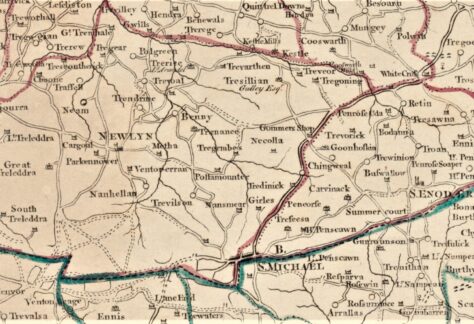
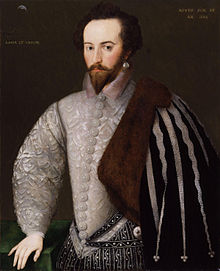
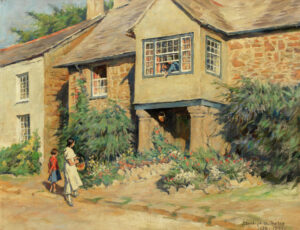
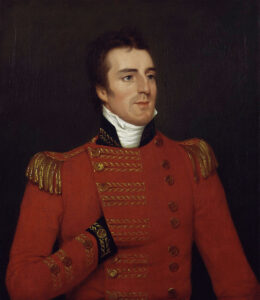
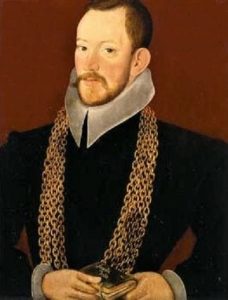
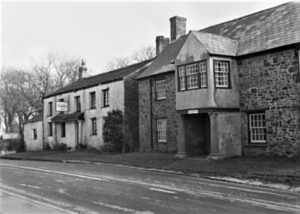
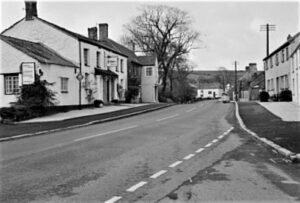
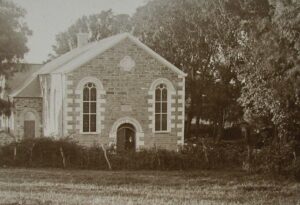
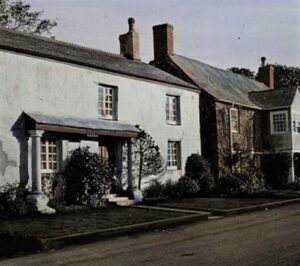
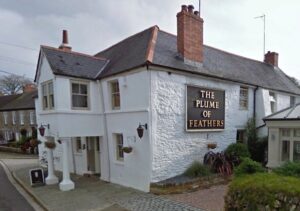
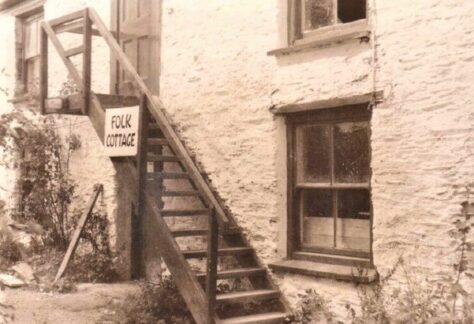
![[91] Voice - Ertach Kernow- 23.03.22A Quirks of Fate Mitchell [S] Ertach Kernow - Quirks of Fate - Mitchell](https://www.cornwallheritage.com/wp-content/uploads/2022/03/91-Voice-Ertach-Kernow-23.03.22A-Quirks-of-Fate-Mitchell-S-224x300.jpg)
![[91] Voice - Ertach Kernow- 23.03.22B Quirks of Fate Mitchell [S] Ertach Kernow - Quirks of Fate - Mitchell](https://www.cornwallheritage.com/wp-content/uploads/2022/03/91-Voice-Ertach-Kernow-23.03.22B-Quirks-of-Fate-Mitchell-S-223x300.jpg)
![[91] Ertach Kernow Heritage Column - 23rd March 2022 - Survey on Heritage Strategy Ertach Kernow Heritage Column - 23rd March 2022 - Survey on Heritage Strategy](https://www.cornwallheritage.com/wp-content/uploads/2022/03/91-Ertach-Kernow-Heritage-Column-23rd-March-2022-Survey-on-Heritage-Strategy-264x300.jpg)